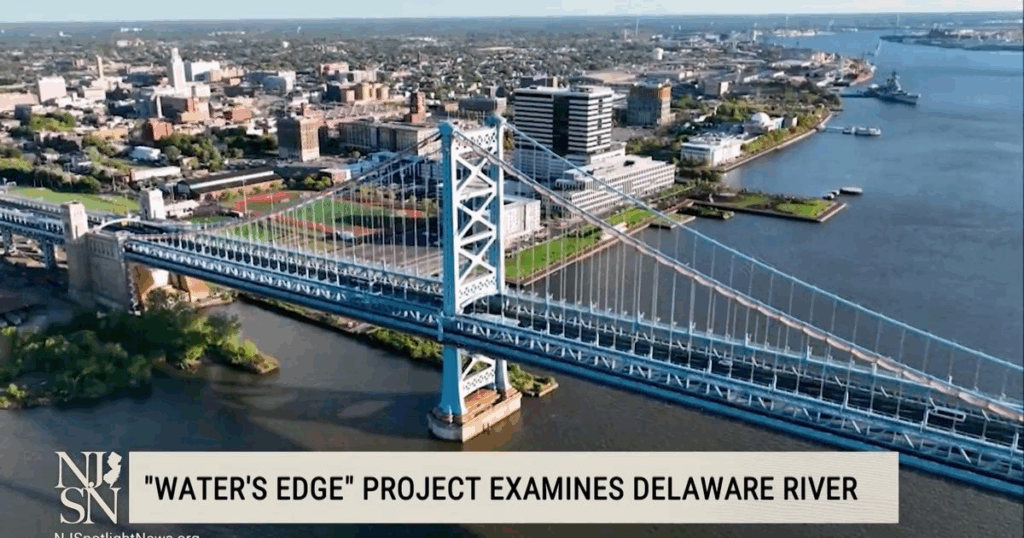The Delaware River Watershed, a vital natural system supporting over 13 million people across New Jersey, Pennsylvania, New York, and Delaware, is a testament to both nature’s resilience and the ongoing challenges posed by human activity and a changing climate. Once heavily polluted, this essential waterway has seen remarkable recovery, transforming into a resource frequented by boaters, anglers, and even bald eagles. Yet, the fight to protect its integrity is far from over, as new and persistent threats continue to emerge.

Enduring Challenges and Emerging Pressures
The journey to a healthier Delaware River has been long, marked by significant cleanup efforts following decades of industrial pollution, sewage, and chemical waste that once created vast “oxygen dead zones.” The implementation of the Clean Water Act in 1972 empowered monumental restoration, leading to a notable comeback for the river. However, the watershed now faces a new array of complex pressures:
- Climate Change and Rising Sea Levels: A critical concern is the steady rise in sea levels, particularly in the tidal sections of the Delaware River. This phenomenon is leading to increased saltwater intrusion, pushing the “salt front” further upstream. This encroachment threatens freshwater supplies for major cities like Philadelphia and communities in Southern New Jersey, risking corrosion of infrastructure, impacting drinking water taste and safety, and disturbing the delicate ecological balance crucial for fish migration and endangered species like the Atlantic sturgeon.
- Development Pressures: Rapid development throughout the watershed, including the construction of large warehouses and new housing, continues to be a significant threat. These projects contribute to increased impervious surfaces, leading to greater stormwater runoff. This runoff carries pollutants into streams and rivers, exacerbating flooding, causing soil erosion, and degrading water quality. The delicate balance between development and conservation is particularly evident in environmentally sensitive areas like the Highlands and the Pinelands, where conflicting regulations for housing and environmental protection create complex dilemmas.
- “Forever Chemicals” (PFAS) and Other Pollutants: Emerging contaminants like PFAS, often referred to as “forever chemicals,” pose a growing threat to water quality. These persistent chemicals require advanced and often costly solutions, sometimes conflicting with existing environmental regulations designed to protect pristine areas.
- Agricultural and Industrial Impacts: While industrial pollution has been significantly reduced, agrarian waste and ongoing discharges from some sewage treatment plants continue to contribute to water quality issues, affecting the health of the river and its tributaries.
- Funding and Regulatory Shifts: Changes in federal environmental policies and potential reductions in funding for protection programs raise concerns among advocates. The loss of financial support and institutional expertise could hinder ongoing conservation efforts and the ability to address new and evolving threats.
Areas Under Scrutiny within New Jersey
New Jersey’s diverse landscape within the Delaware River Watershed highlights specific vulnerabilities and conservation priorities:
- The Highlands: This pristine region in western New Jersey, vital for drinking water, faces challenges from development, stormwater runoff, and failing septic systems, leading to harmful algal blooms and rising water temperatures that threaten aquatic life.
- The Pinelands: Efforts to preserve this unique ecosystem are under pressure from development and rising temperatures. Fertilizer runoff from agricultural activities also threatens the region’s renowned cranberry bogs.
- The Bayshore: Along the Delaware Bay, climate change is directly impacting forests and critical habitats, with creeping saltwater imperiling both natural ecosystems and freshwater supplies.
- The Urban Estuary (Camden to Trenton): While this section has seen remarkable recovery, persistently low oxygen levels and the presence of new industrial development remain concerns, requiring stricter regulatory standards to ensure the river is fully habitable for fish and other aquatic life.
The continuous vigilance and adaptation of conservation strategies are essential to ensure the long-term health and vitality of the Delaware River Watershed for both its natural inhabitants and the millions of people who depend on its resources. For more detailed insights into the challenges facing South Jersey’s waterways, you can explore further at Water’s Edge: Threats to the Delaware River Watershed.











